Leading and Shaping a Testing Team with the Testing Wheel: Daniel Knott [Testμ 2022]
LambdaTest
Posted On: August 30, 2022
![]() 6727 Views
6727 Views
![]() 10 Min Read
10 Min Read
It might be challenging to manage a testing team of individuals with varying backgrounds, abilities, and perspectives. Modern leaders should encourage, mentor, coach, and support their direct reports as they develop their testing skills.
Daniel Knott, Head of Software Testing, MaibornWolff GmbH, joined Sudhir Joshi, Head, Customer Success, LambdaTest as a guest speaker at the Testμ Conference 2022 to introduce the testing wheel to you and what it’s all about.
Daniel Knott appreciates high-quality digital products, whether web or native mobile applications. He is currently shaping the direction of testing for his clients while employed as the Head of Software Testing at MaibornWolff in Germany.
He served as the lead software test engineer for many native mobile apps and products over the last 13 years.
A few of the session’s intriguing discussion points will be highlighted. Are you excited? Read on to know more! If you missed this session, here is the video link.
Daniel starts his talk with a question.
When was the last time you gave or received any career advice?
According to Daniel, deciding on the right career is important. He thinks career advice is essential for us as we evolve and improve our actions. After spending more than 11 years in the software testing industry, he switched careers and worked as a product manager for four years.
While working as a team, some of your colleagues might be Software Testers, Developers, UX Designers, Product Managers, Stakeholders, or Customers, and we need to evolve different skill sets. Some employees are lead executives, while others may still be students. As a result, it’s crucial to adapt your team to include individuals with various skill sets.
Some employees are keenly interested in learning more about automation testing, while others are interested in jumping into people management, agile, or product quality coaching.
“As a leader, it is your responsibility to draw a path and guide to tackle things,” says Daniel.
It is normal to have potential conflicts when managing people. Daniel asserts that the team leader must ensure that each team member is more knowledgeable than the team leader. If one of your team members feels that they don’t receive enough support from you, they will likely leave the organization or the team.
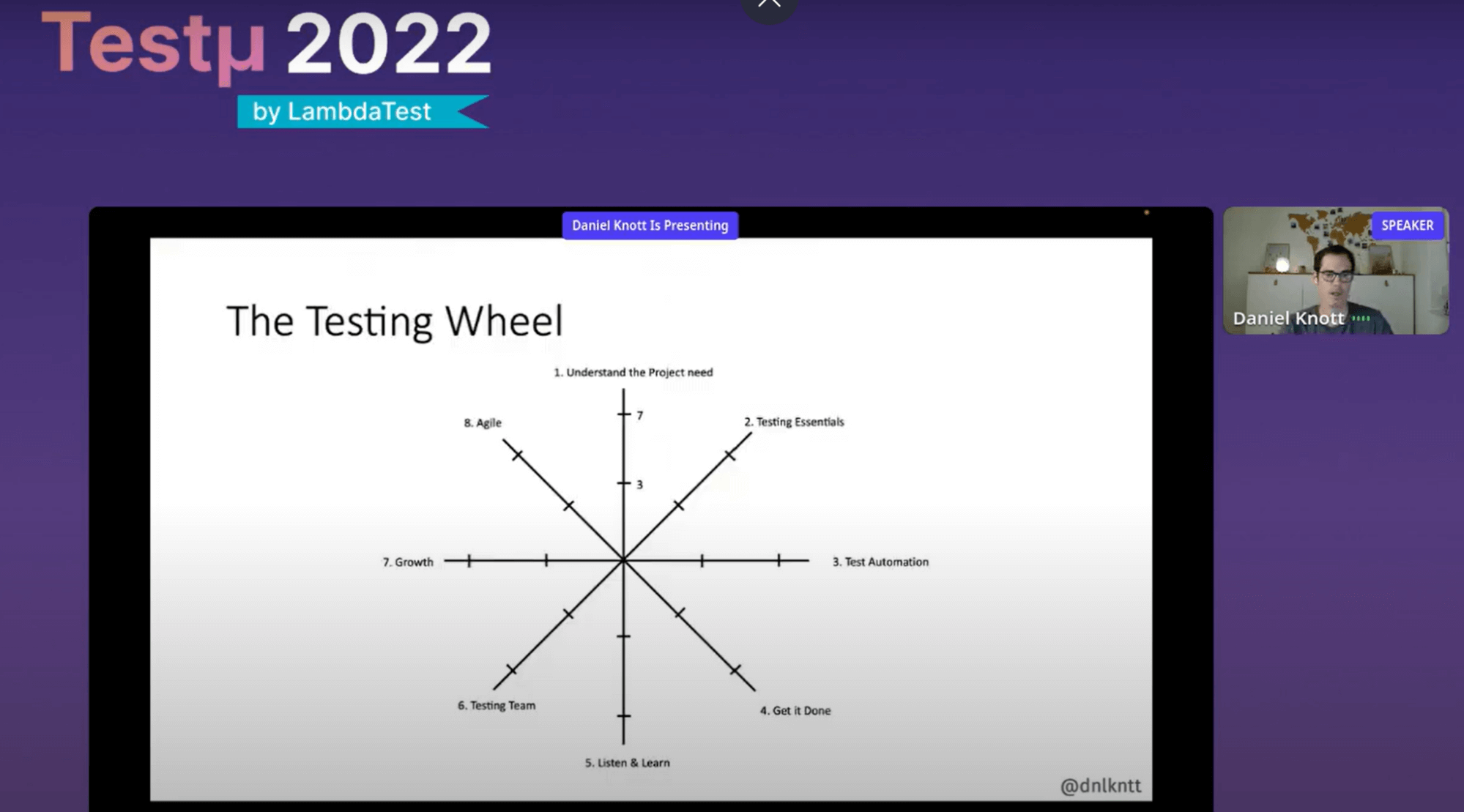
This is where Daniel kicks in the testing wheel. The testing wheel has eight categories.
- Understand the Project Needs
- Testing Essentials
- Test Automation
- Get it Done
- Listen & Learn
- Testing Team
- Personal Growth
- Agile
Before diving into the testing wheel, there was a disclaimer from Daniel. A testing wheel is an instrument or tool for the team leader or a team member to get into a discussion to highlight the different skill sets of an employee. It should not be used for performance testing of any team member.
- Understand the Project Needs:
- Testing Essentials
- Test Automation
- Get it Done
- Listen & Learn
- Testing Team
- Personal Growth
- Agile
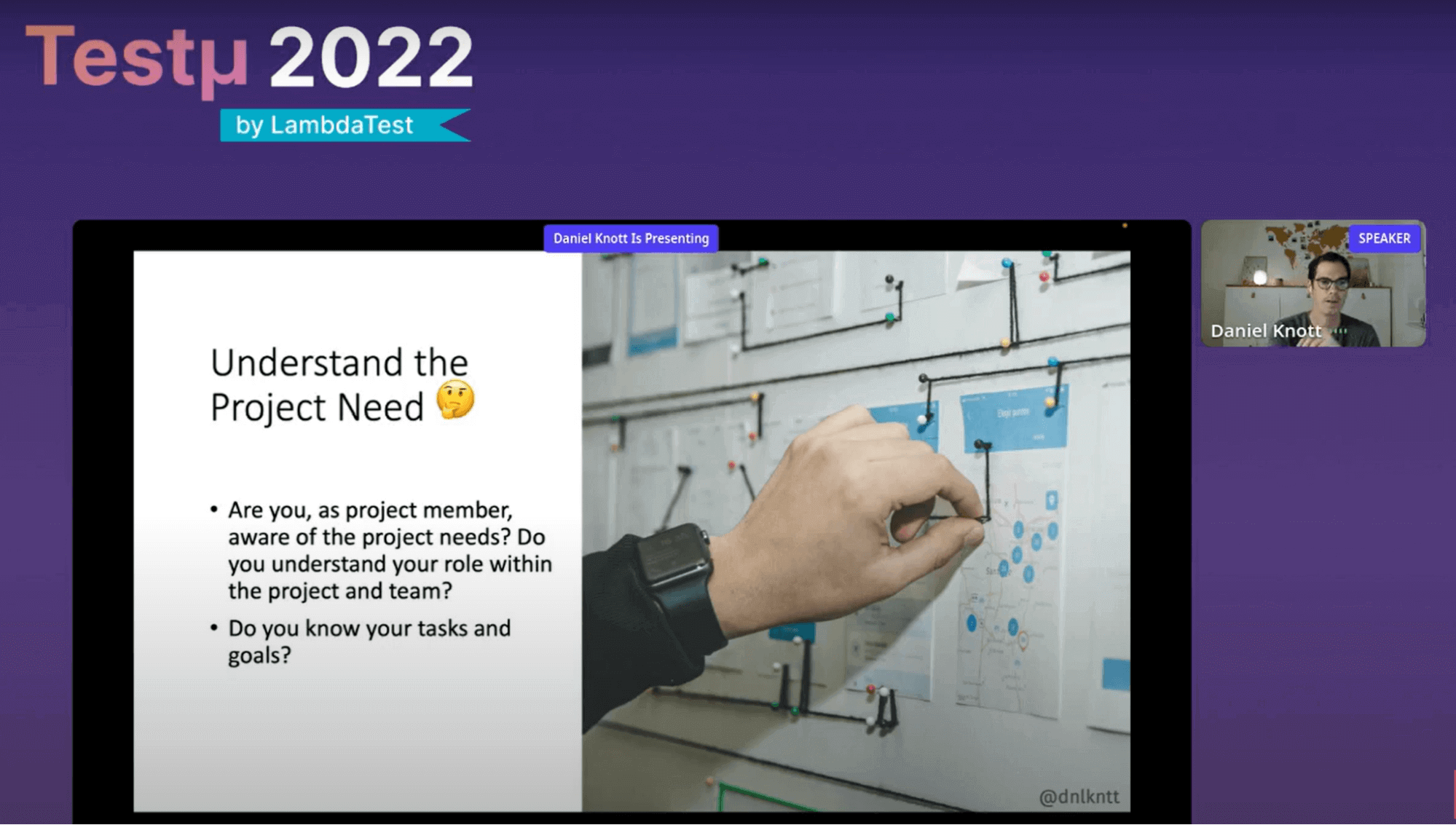
The first category is understanding the project needs. As a team member or participant, you must comprehend the project’s needs. You must also understand your specific part of the project. Whenever filling out a testing wheel, you need to understand everything in your project.
If you’re an experienced individual who joins a project with an onboarding phase, you can set it with only one click, according to your experiences. That, however, does not hold for every team member. The project needs are vast, and one needs to have a specific understanding of their role. The deep you dive into understanding the project and the role, the quality it brings as output.
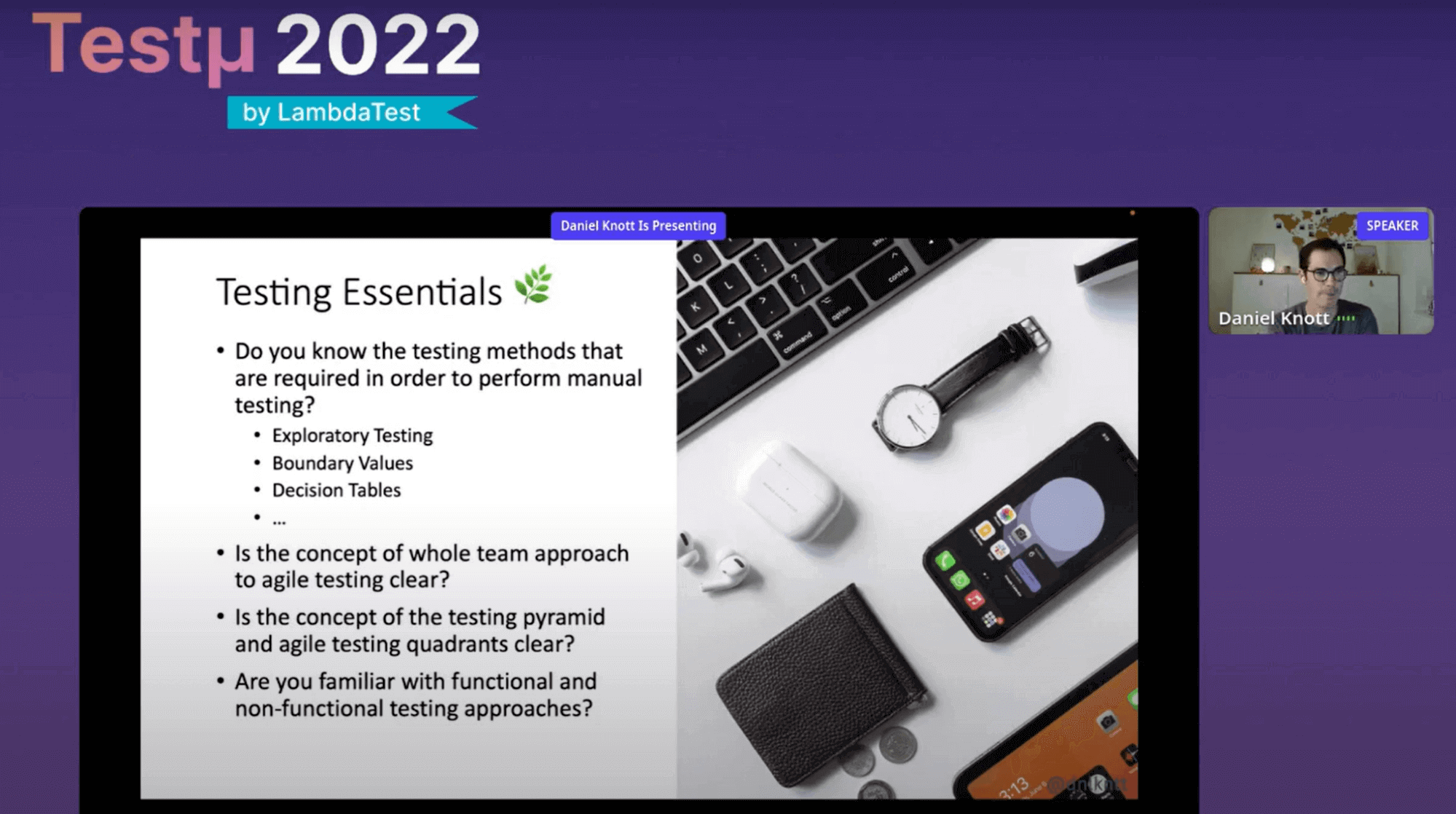
The testing essentials category is the second most significant in the testing wheel. To undertake manual testing, one should know the testing methodologies needed. The team members must understand what has to be tested before beginning any project. Setting testing priorities is crucial. Every team member needs to be aware of when to conduct exploratory testing. The idea must be very obvious. In addition, they must understand the decision tables and the boundary values.
A project involves both functional and non-functional tests. Each team member must know about functional and non-functional testing techniques. However, before moving on with a project, it is important to confirm that the testing pyramid and agile testing quadrants are clear.
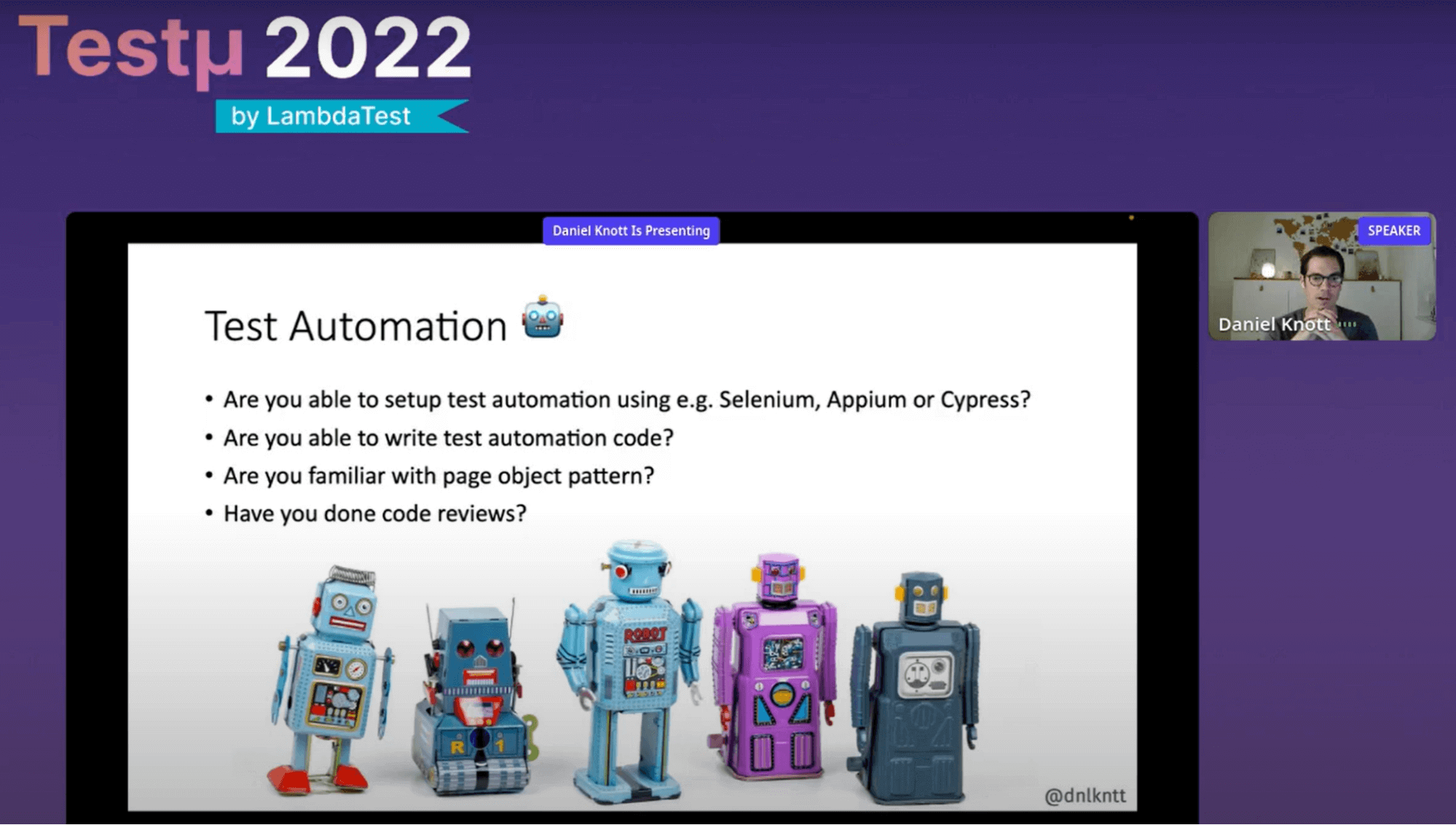
Daniel claims that the testing wheel’s third major category is test automation. Every team member needs to understand how to set up test automation using Selenium, Appium, Cypress, or any other tools based on the tech stack being used in your company. There are differences between setting up the code and writing it.
Writing test automation code is necessary. Anyone who wants to begin automating tests immediately must have the clarity to understand what, how, and when to automate. Before starting the test automation, they must ensure they are familiar with the page object pattern. One must understand the concept of code reviews before migrating or diving into test automation.
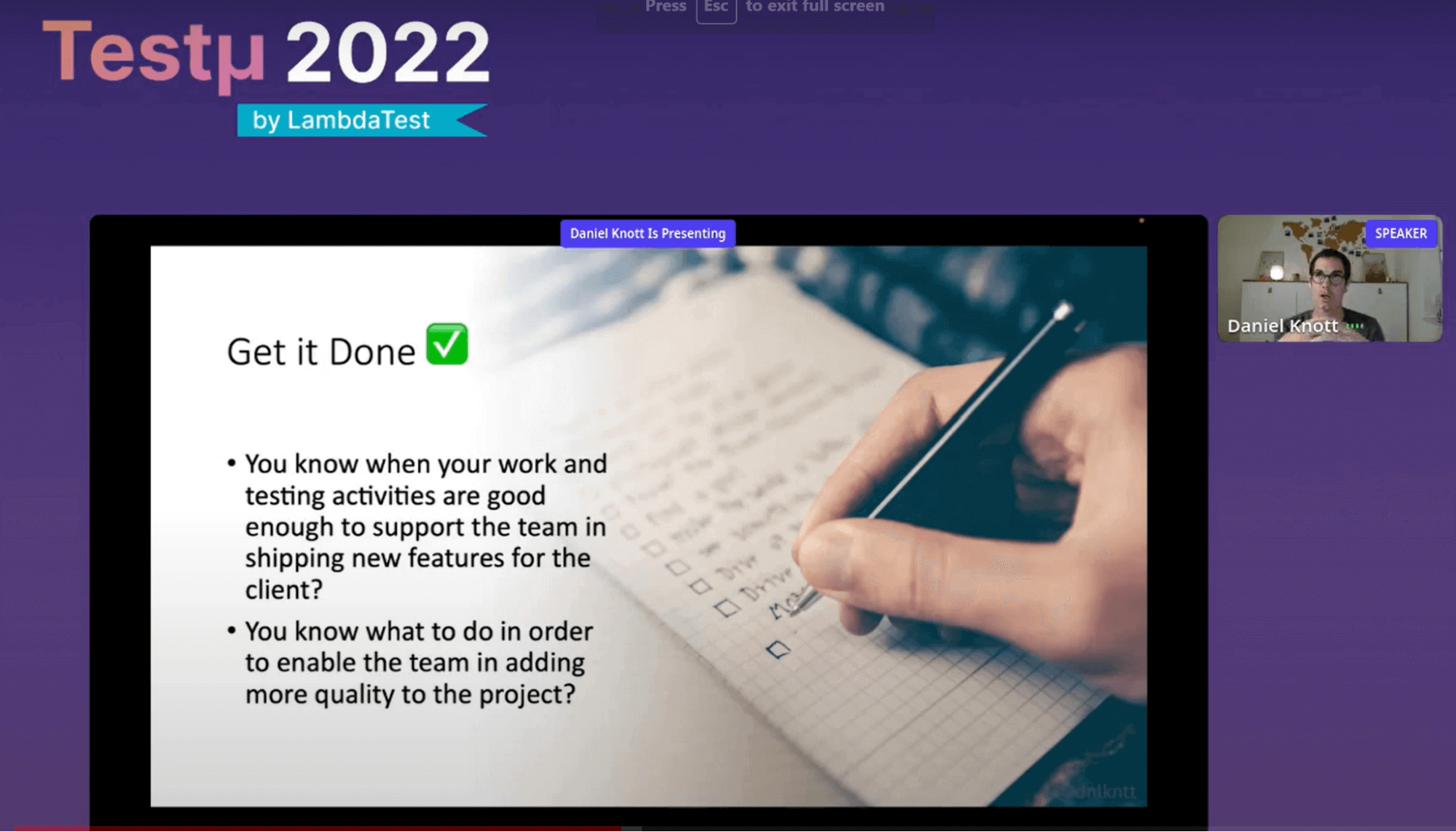
Get it done is the testing wheel’s fourth major category. Daniel claims that testing never ends. Numerous testing types are involved, including accessibility, load, security, performance, and maintenance. The team member working on the project must know when to end the testing. They rush into using the product and assume they are experts, yet they don’t perform the basic testing.
Therefore, it is crucial to recognize when you complete tasks on schedule. You must remember when your work and testing efforts are sufficient to assist the team in delivering new features to the client. Additionally, you need to know what to do to help the team add additional quality to the project.
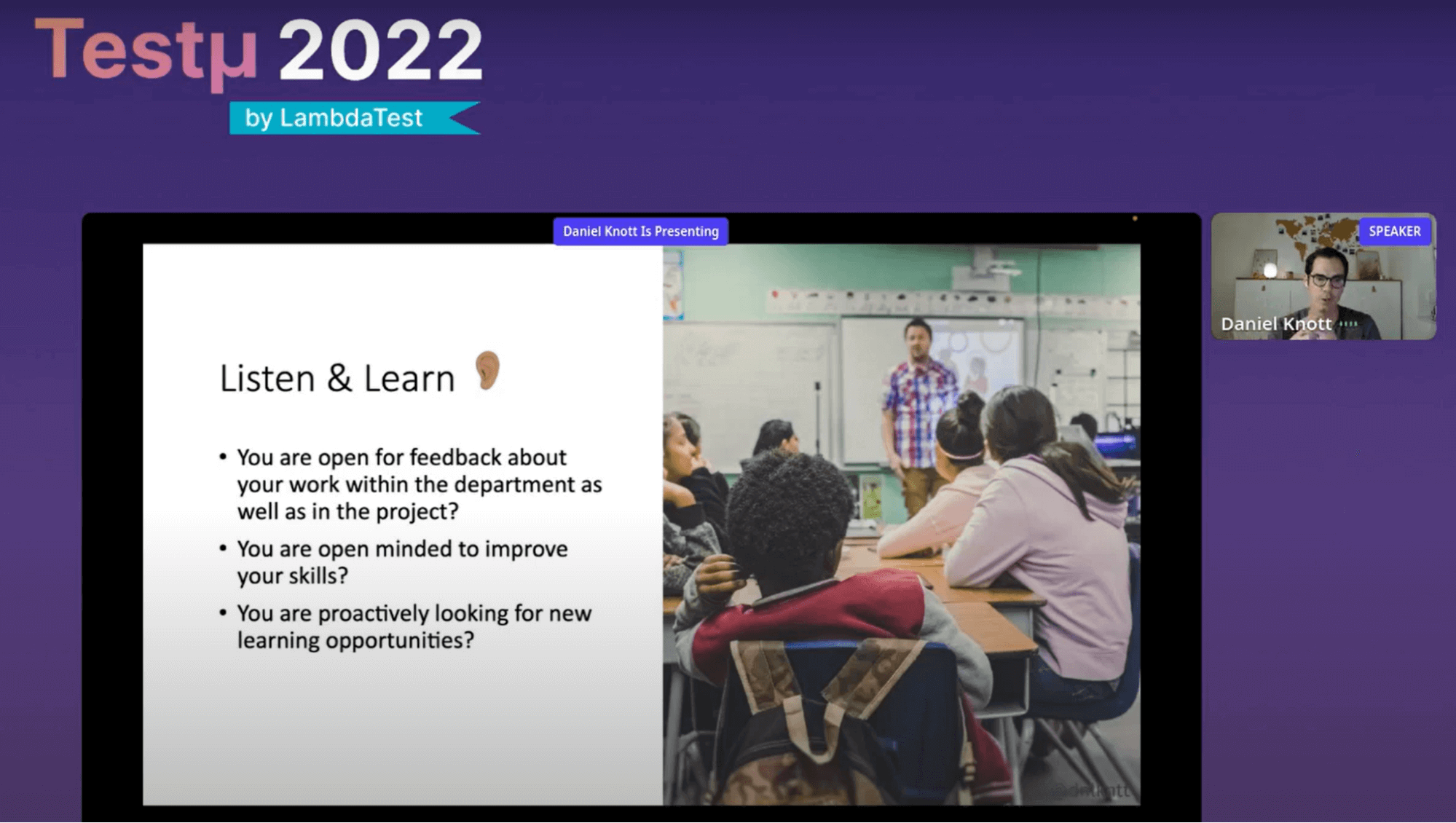
The fifth crucial test ability is “Listen & Learn.” Any team member taking part in the testing project needs to be patient enough to hear the criticism. You are always receptive to criticism. You must agree with the input from those around you and modify or improve the work as necessary. The comments could be positive or negative.
Feedback may be sent to your project or various departments. But every tester must approach it broadly. One needs to be sure they are willing to enhance their talents based on the feedback provided. Additionally, take note of the advice provided, make proactive improvements, and search for learning opportunities.
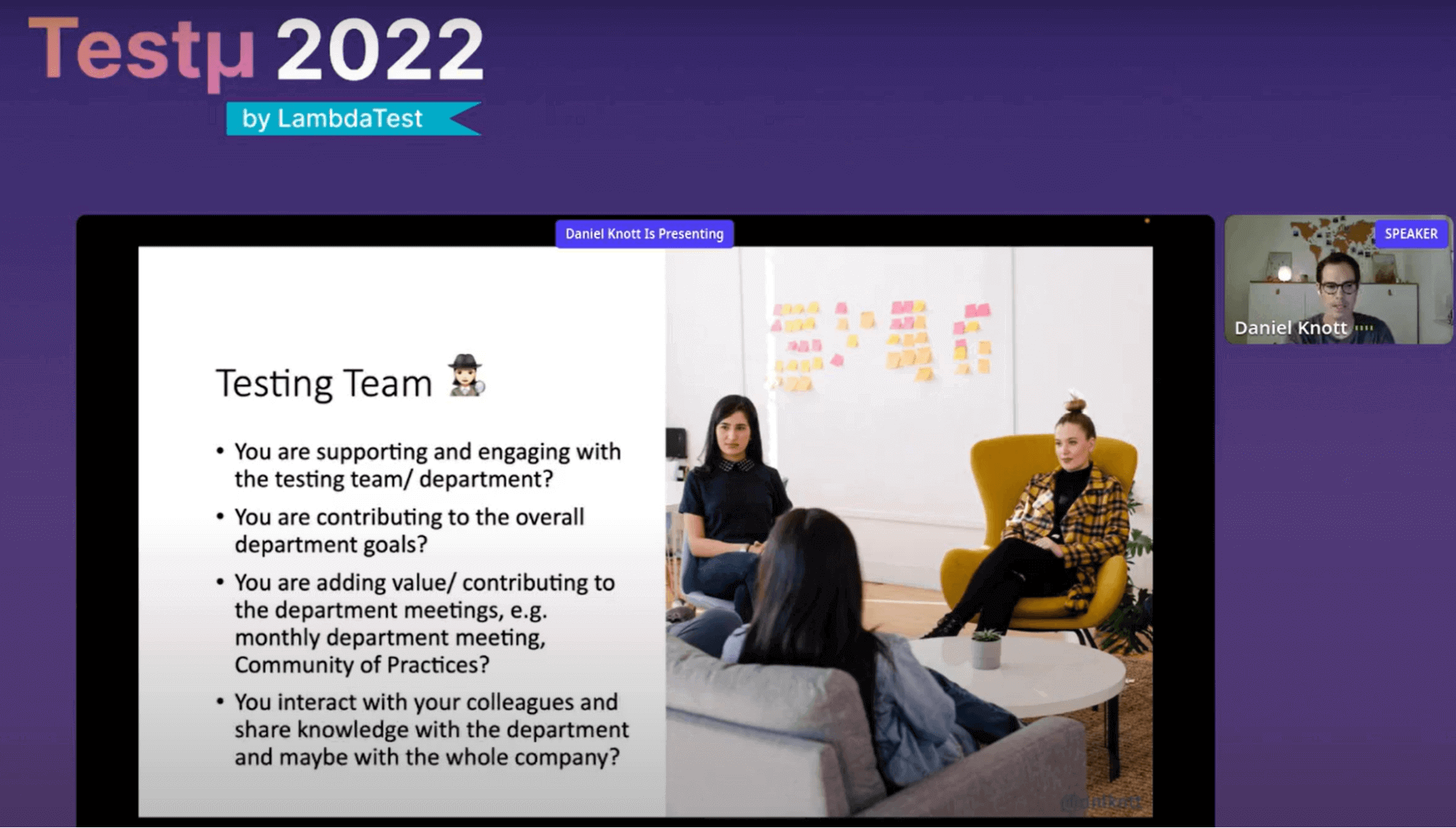
Let’s go on to category six, “Testing Team.” Regardless of the department, you must be engaged and supportive of your testing team. Everyone typically works on projects based on clients and customers. Therefore, the team members should speak up and share their prior experiences to improve testing quality. Before the testing begins, the team members should review the information they have already learned. They must also discuss the difficulties and lessons learned from using the tools.
Make sure you are advancing the department’s overarching objectives. Additionally, it is important to contribute value and participate in department meetings. Various department meetings, such as monthly department meetings or community of practice, are held. Every team member must also interact with their coworkers and impart expertise to the division or the entire company.
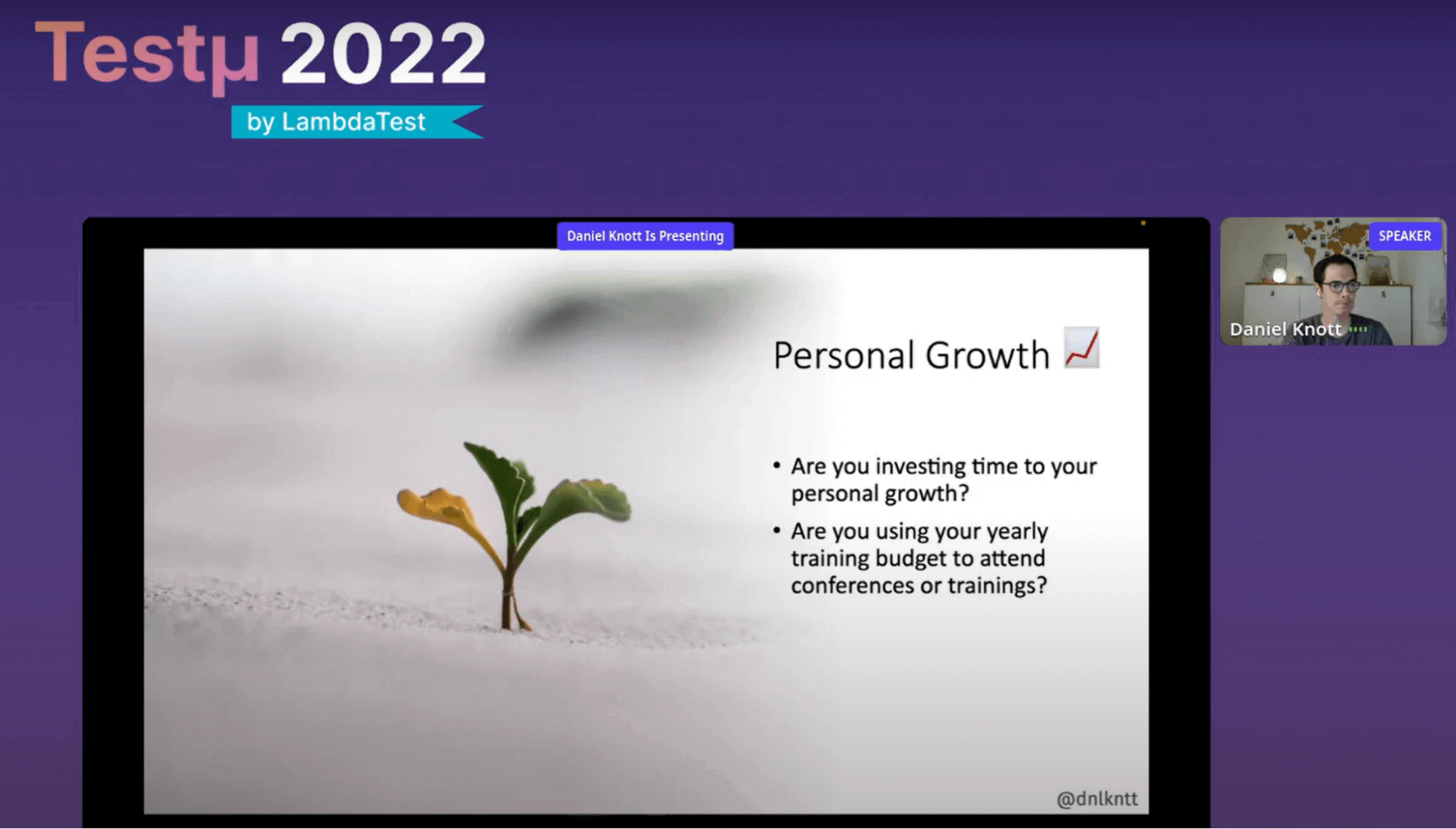
Personal growth is the seventh category on the testing wheel. It is challenging to focus on your improvement when you are busy meeting weekly or monthly requirements and have a tight schedule. One must ask themselves if they are spending time on their growth. Some conferences and training sessions must be attended as part of your sprint activities. Budgets specifically for training are available. Ensure that you utilize that wisely for at least a year.
Many Slack communities also trade topics to help people learn and develop personally. Attending conferences and receiving training exclusively on testing is not always required. Additionally, you can focus on topics that may be useful in your day-to-day life, such as presenting skills, dispute resolution, time management, or other topics. Registering in workshops or certificate programs on tool usage is also a good idea. Therefore, personal development is also crucial in addition to the project’s needs.
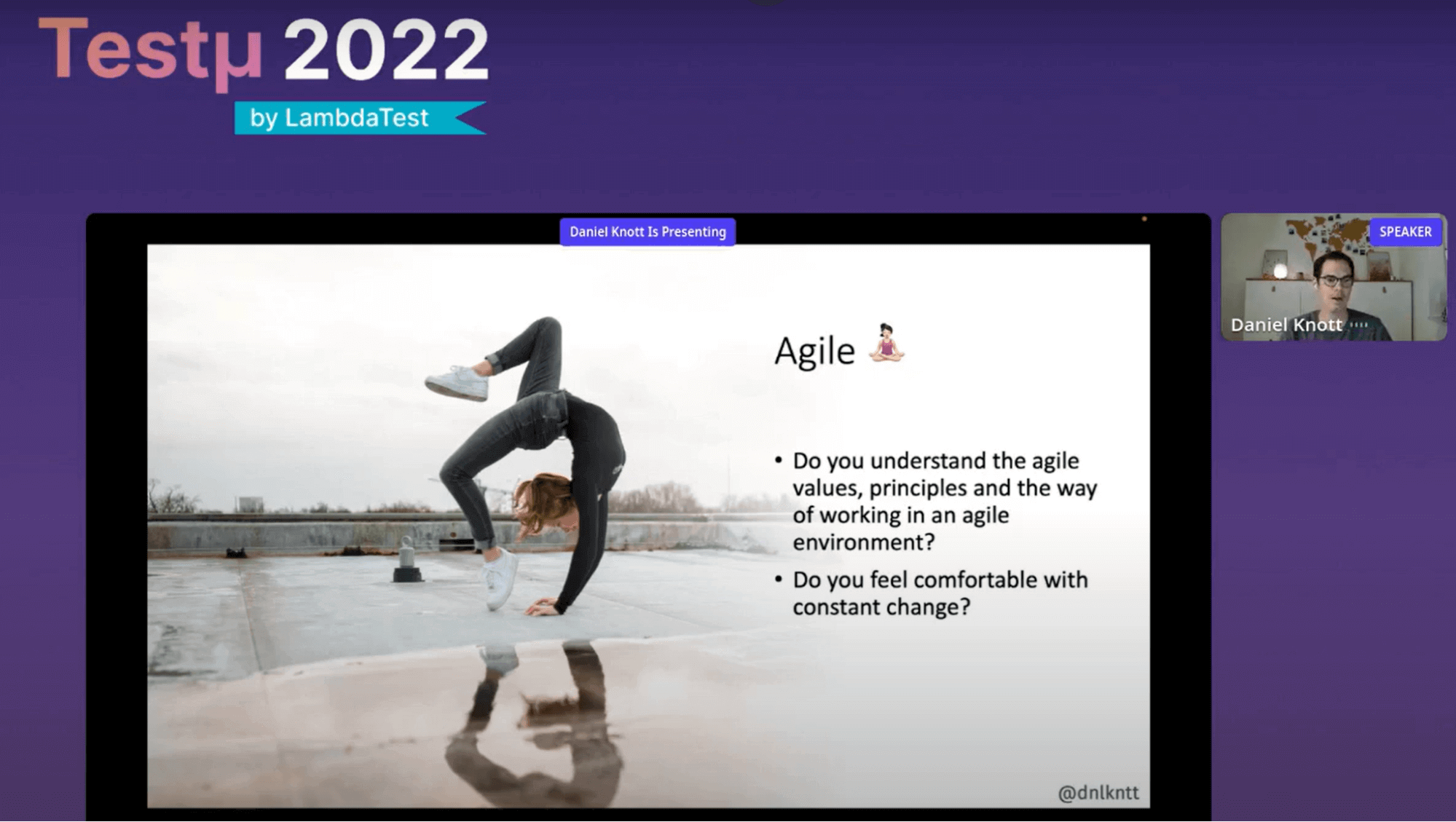
Agile is the fourth and final key category on the testing wheel. The agile approaches that are used in an organization must be adjusted. Understanding the fundamentals behind the agile methodology is crucial before implementing it. Included are the working style, agile values, and principles. The demands and working environment will change continuously. Ad hoc requirements start to appear. Therefore, one must be at ease with the ongoing changes.
There is a scale incorporated with the testing wheel. Daniel marked it with 0, 3, and 7. He explains the scale marking in detail.
- 0- I have no idea about this
- 3- I know about this topic, but I see room for improvement.
- 7- Ask me anything about it. I know what I am doing.
Let’s get into detail on how to use it:
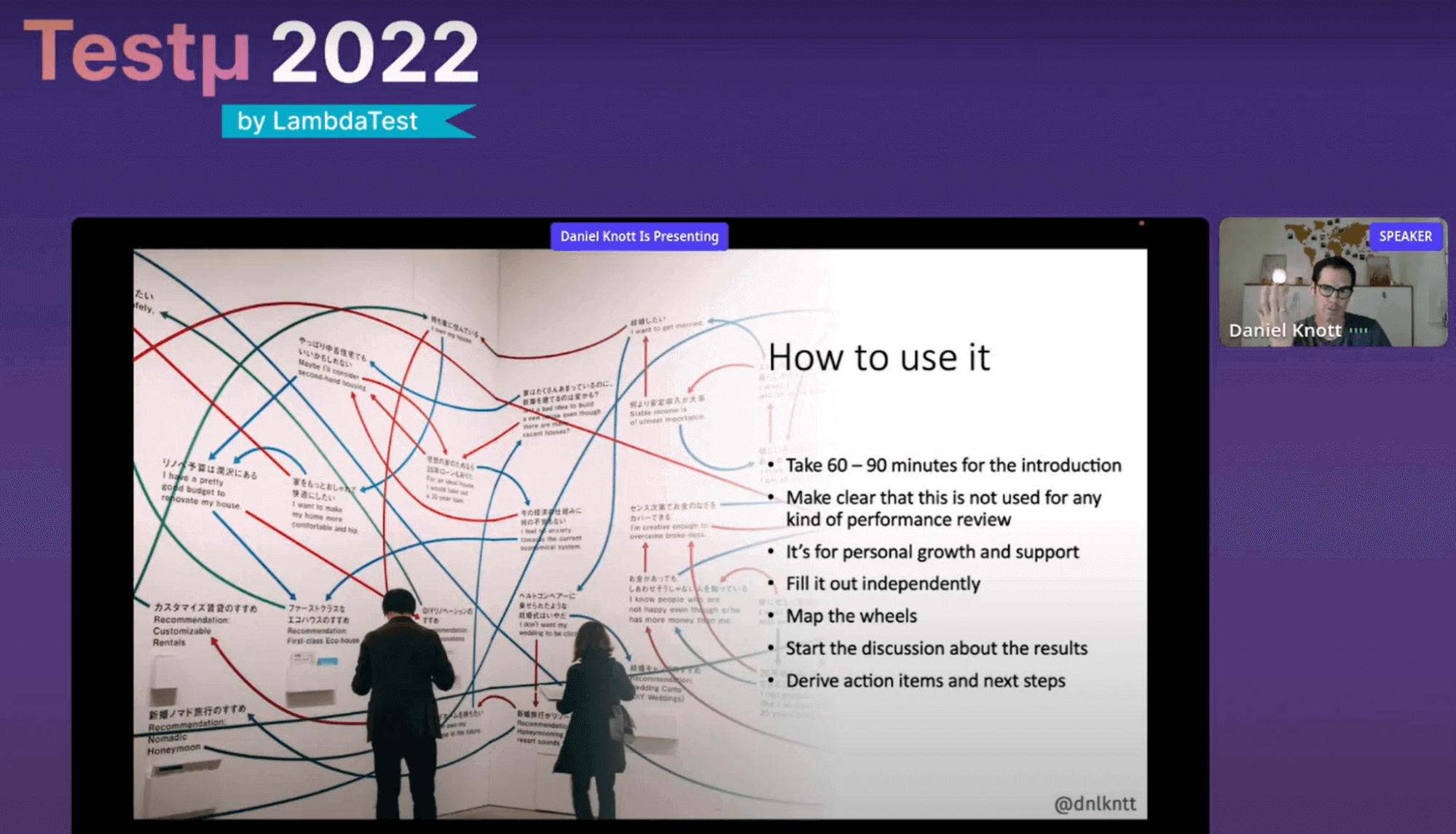
Here are some takeaways from Daniel’s Testing Wheel session:
- The testing wheel helps to lead and coach others.
- Results should not be used for performance reviews.
- Derive substantial growth.
- Repeat the exercise after some time.
- Adapt the wheel to your needs.
It was indeed an insightful session with Daniel. The session ended with a few questions asked by the attendees to Daniel. Here is the Q&A:
- What is the ideal ratio for developers and testers in a team?
- How do you motivate testing teams? Especially with a small sprint duration and no time for the new learning?
- If you aren’t getting career advice/support from your manager, what are some good resources to seek out for?
- How to handle a hybrid work culture, especially from testing team leaders’ point of view?
- When did you feel confident enough to step into the test lead role?
Daniel: I think a ratio of 4:1 is working quite well. So, having four developers and one tester in a team is something that I see working out. I worked a few years back, and this ratio always felt good.
Daniel: That’s usually tough. What we do in the company is a project base. When we typically send our testers for four days to the client working side, we ask them to work 80-85% and spend the remaining 15-20% on learning. Focussing on things and sharing knowledge also becomes a part of learning.
Daniel: I was always lucky to have managers that gave career advice and support, but what I did is just coming to my mind is talking to your co-workers if you feel safe enough to speak with them if they have the same professional working as a tester or they work for another company as a software tester and ask them for advice. You could also share your resume or LinkedIn profile and ask for advice, telling them that you are stuck in the role.
Daniel: During this pandemic, everybody works remotely. Being at home, I attend conferences, do blogs, and am engaged with the complete schedule. Our team members plan together to have lunch at a good restaurant to have fun. We discuss it anytime during lunch and share our knowledge about the tools.
Daniel: The first time I stepped into this role, I fell into it. Because there was a significant reorganization in my company, I was the only one with skills and knowledge in that field. They wanted to grow that field back then, and they asked me. “Hey, you know everything about it. How do you want to become a leader in this topic”? For me, it was shocking because the leader sounded big, and I just said yes. I found it felt a bit difficult to handle things at the beginning. I slowly learned by experience.
After successful Testμ Conference 2022, where thousands of testers, QA professionals, and developers worldwide joined together to discuss on future of testing.
Join the testing revolution at LambdaTest Testμ Conference 2023. Register now!” – The testing revolution is happening, and you don’t want to be left behind. Join us at LambdaTest Testμ Conference 2023 and learn how to stay ahead of the curve. Register now and be a part of the revolution.
Got Questions? Drop them on LambdaTest Community. Visit now















